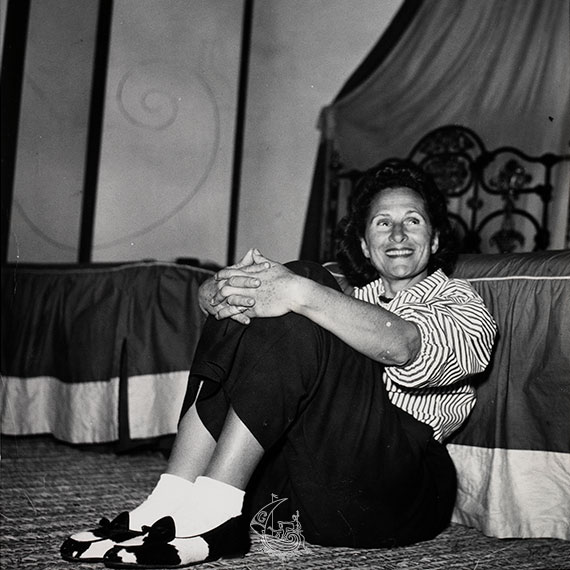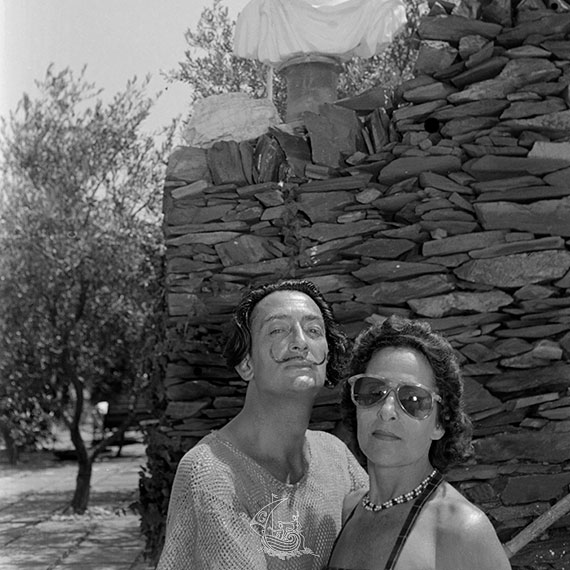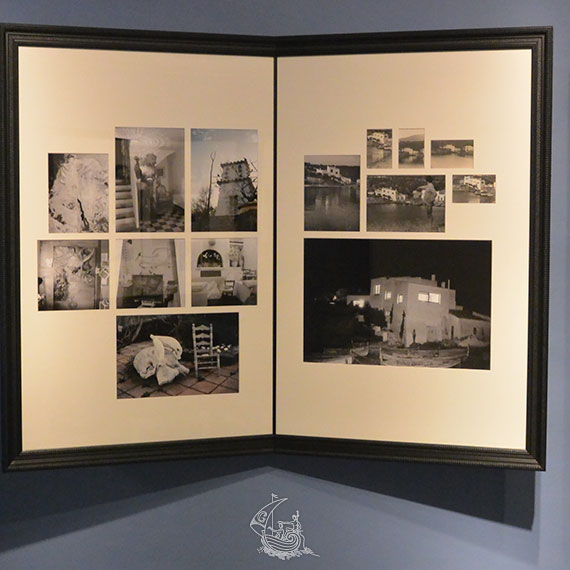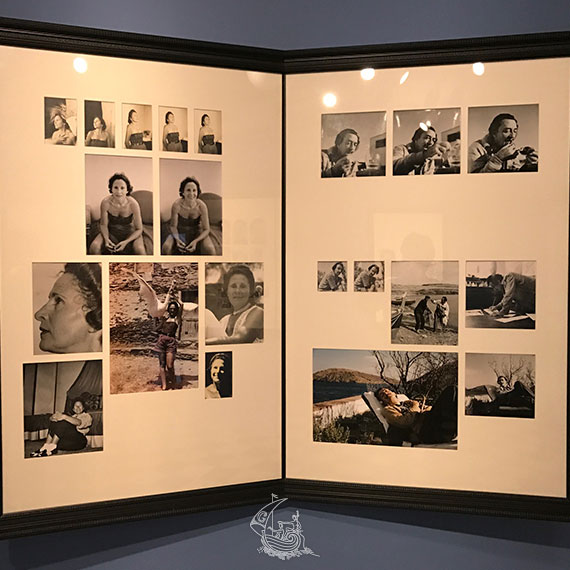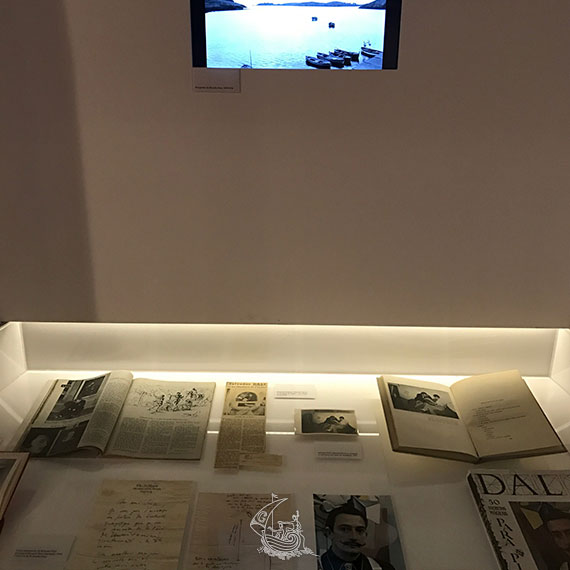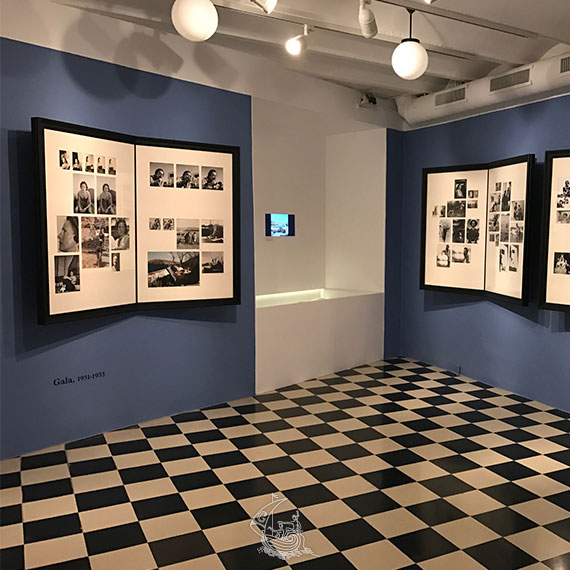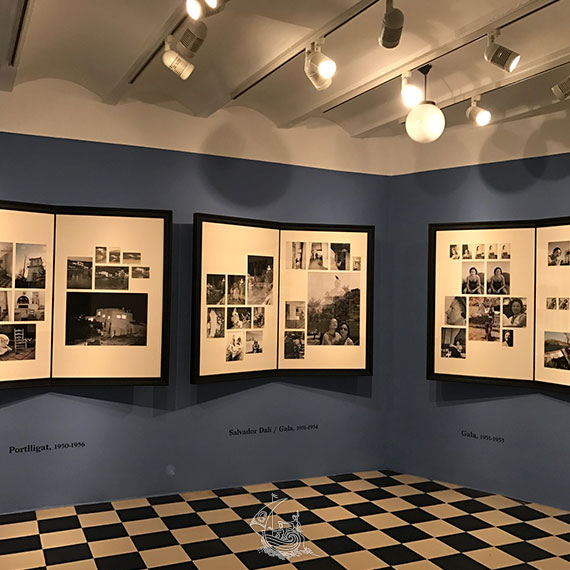Exhibition
90 pictures of Gala and Salvador Dalí between 1949 and 1956 by Ricardo Sans are shown as well as different documents.
Over a screen a selection of photographs are projected. The exhibition is organized into four sections in chronological order: Portraits of Salvador Dalí, 1949-1956; Portraits of Gala, 1951-1953; Portraits of Salvador Dalí and Gala, 1951-1954; and Portlligat, 1950-1956. The Dalí we see here is less distant, more personal, spontaneous, in the privacy of his home and relaxed in front of the camera. In the section devoted to portraits of Gala, we see her smiling, relaxed and natural, even posing for the photographer –a far from frequent occurrence. These shots of Gala are perhaps the least known photographs by Sans. The last section is a graphic document of the architectural evolution of the house in Portlligat. Two photographs with Dalí’s notes and drawings for the builder are of great interest for knowing the insights of the artist’s ideas regarding the architectural modifications to his home.
This exhibition is curated by Rosa Maria Maurell and Cuca R. Costa of the CED with the scientific direction of Montse Aguer, director of the Dalí Museums.
The Dalis and Ricardo Sans friendship
Dalí and Ricardo Sans were introduced to one another by mutual friends, Gonçal Serraclara and José Luis Beltran, in 1949.
On this visit Sans made his first Dalí photo-essay and took the colour photograph for the jacket of the Spanish edition of the book 50 Secrets of Magic Craftsmanship published in 1951. Work on the studio at Portlligat was completed in the spring of 1950, and from 1951 on Ricardo Sans documented this new space with Dalí and Gala as models; he also made some wonderful portraits of the artist in his work environment, together with the canvases he was painting at the time, such as Christ of Saint John of the Cross, The Madonna of Portlligat, Lapis Lazuline Corpuscular Assumpta , Rhinocerontic Figure of Illisus of Phidias . These works belong to a new stage in Dalí’s creative output with the advent of his nuclear mysticism, a combination of religion and science influenced by the atom bomb tests and a return to the classics and the treatise by Luca Pacioli, De divina proportione.
Video
Púbol Castle is thus a highly significant place in the Dalinian creation: it is a continuation of Portlligat with a personality of its own. It is Dalí’s gift to his wife Gala, to whom he took an oath of allegiance and where he could not gain access without written permission from her. For the past 20 years the castle is also a space for our temporary exhibitions. These shows allow us to deep into the life and creativity of Salvador Dalí. The exhibition Salvador Dalí, Gala, Ricardo Sans offers an intimate view about Salvador Dalí and Gala in the inspiring scenery of Portlligat.
A video of the Fundació Gala-Salvador Dalí filmed by Doc Doc Films.
